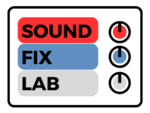1. Duplicate the guitar tracks
Create a copy of each guitar track that you want to work on. This will allow you to process the duplicated tracks separately from the original tracks.
2. Convert duplicated tracks to mid/side processing
On the duplicated tracks, switch the processing mode to Mid or Side instead of the conventional stereo mode. This will enable you to independently manipulate the mono (mid) and stereo (side) components of the guitar tracks.
3. Apply EQ adjustments to the mid channel
On the duplicated tracks, focus on the mid channel (mono) and apply EQ adjustments to shape the frequencies that are common to both guitars. This can include cutting or boosting certain frequency ranges to create space and separation between the guitars. For example, you can reduce frequencies that clash or create masking, allowing each guitar to have its own sonic territory.
4. Adjust the side channel for stereo width
On the duplicated tracks, focus on the side channel (stereo) and make adjustments to enhance the stereo width and spaciousness of each guitar. This can involve applying subtle EQ boosts or cuts to frequencies that contribute to the stereo image. Be cautious not to overdo it, as excessive adjustments may cause the mix to sound unnatural or unbalanced. Typically above 5 kHz, can contribute to a sense of airiness and spaciousness in the stereo image. Be cautious not to overdo it, as excessive boosts in the high frequencies can make the mix sound harsh or unnatural.
5. Blend the processed tracks with the original tracks
Once you’re satisfied with the EQ adjustments made to the duplicated tracks in the mid and side channels, blend them with the original tracks in the mix. Find the right balance to ensure the guitars sound well-separated and distinct, while still maintaining a cohesive overall sound.
Sidenote
The specific EQ adjustments and frequencies to target will depend on the characteristics of your guitars, the mix, and your personal preference. Take your time, listen critically, and make subtle adjustments to achieve a balanced and enhanced stereo image for each guitar.

